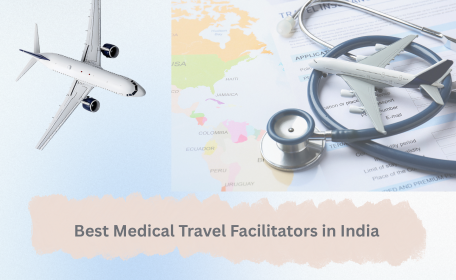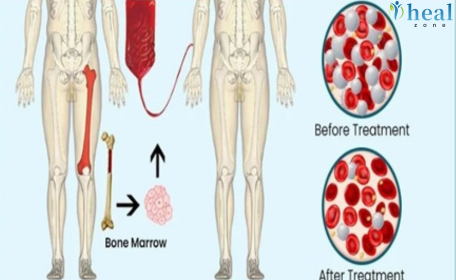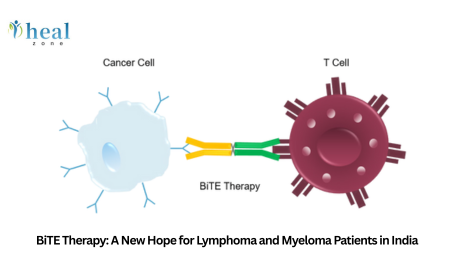What is Ankle Joint Replacement and When is it Needed?
Ankle joint replacement, also known as total ankle arthroplasty, involves replacing the damaged surfaces of the ankle bones with artificial components made of metal and high-grade plastic. The goal is to relieve pain and restore mobility in patients whose joints have become severely affected due to conditions such as:
- Osteoarthritis or rheumatoid arthritis
- Post-traumatic arthritis from previous injuries
- Failed prior ankle surgeries
- Chronic ankle instability causing deformity and cartilage wear
Patients often choose this procedure when conservative treatments like medications, physiotherapy, or steroid injections fail to provide relief. It is most suitable for patients who are moderately active, maintain a healthy weight, and do not have major foot deformities.
What are the Different Types or Techniques of this Treatment?
There are several surgical techniques and prosthesis models used in ankle joint replacement, tailored to the patient's anatomy and functional demands. The most common approaches include:
- Fixed-Bearing Implant: Offers a solid connection between the tibia and talus. It’s suitable for patients with good bone quality.
- Mobile-Bearing Implant: Allows slight rotational movements, mimicking natural motion. It is more anatomical and offers better mobility.
- Minimally Invasive Approach: In select cases, smaller incisions and less soft tissue disruption are possible, which reduce recovery time.
- Custom Implants: For patients with unique anatomy or previous surgeries, custom-designed implants can be created using 3D imaging.
Surgeons select the best type based on the severity of arthritis, bone structure, patient activity level, and overall health condition.
What is the Standard Treatment Protocol for International Patients in India?
India follows globally accepted clinical protocols tailored to the needs of international patients. Here's a standard care flow:
- Pre-arrival Consultation: Initial evaluation through reports, video consultation with surgeon, and personalized treatment plan.
- Hospital Admission: Admission usually takes place a day before the surgery. Preoperative tests (X-ray, MRI, bloodwork) are repeated if needed.
- Surgical Procedure: Performed under spinal or general anesthesia. The damaged joint surfaces are removed and replaced with prosthetic components.
- Post-Op Monitoring: Patients stay in the hospital for 3–5 days under close medical supervision.
- Physiotherapy & Mobilization: Begins within 24–48 hours post-surgery. Inpatient and outpatient sessions help restore strength and flexibility.
- Discharge & Travel Fit Certificate: Patients receive documentation for safe travel and detailed recovery guidelines.
- Virtual Follow-Up: Continued follow-up is offered via teleconsultation.
International patient care coordinators usually assist with airport pickup, language interpretation, and travel support.
What Kind of Devices, Implants, or Surgical Tools are Used?
Indian hospitals use globally approved, FDA or CE-marked ankle replacement implants from leading orthopedic manufacturers. The commonly used components and tools include:
- Tibial Component: Made of cobalt-chromium or titanium alloy
- Talar Component: Designed to replicate the dome-shaped talus surface
- Polyethylene Spacer: Serves as a shock absorber and allows smooth motion
- Navigation Systems & Jigs: Ensures accurate alignment during surgery
- Power Tools: Precision drills and saws help in bone resurfacing
- 3D Imaging & Intraoperative Fluoroscopy: Improve precision and surgical safety
All equipment and implants meet strict international safety and quality standards.
What is the Cost Breakdown of Ankle Joint Replacement in India?
Ankle joint replacement in India is significantly more affordable compared to Western nations while maintaining high standards of care. Here’s the average cost breakdown:
- Surgeon’s Fees: $1,000 – $1,800
- Hospital Stay (3–5 Days): $1,000 – $1,500
- Implant Cost: $2,000 – $3,000 (depends on brand and type)
- Anesthesia & OT Charges: $500 – $800
- Pre-op Investigations & Imaging: $200 – $400
- Post-operative Physiotherapy: $300 – $500
- Miscellaneous (medications, consumables, etc.): $500 – $800
Total Estimated Cost: $5,500 – $8,500
Costs may vary based on hospital category, location, room type, and patient health condition.
Why Should International Patients Choose India for This Treatment?
India has emerged as a global leader in orthopedic and joint replacement procedures due to several compelling reasons:
- Globally Trained Surgeons: Most orthopedic surgeons in India are trained in top institutions in the US, UK, or Europe and have vast international experience.
- Modern Infrastructure: Hospitals are equipped with state-of-the-art operation theatres, robotics-assisted systems, and modular ICUs.
- Affordable Packages: The cost is a fraction of what is charged in Western nations, including surgery, hospitalization, physiotherapy, and medications.
- No Wait Time: International patients can schedule their treatment with minimal waiting periods, ensuring timely care.
- English-Speaking Medical Staff: This helps avoid language barriers and ensures smooth communication for foreign patients.
- Comprehensive Support: Services like visa assistance, airport transfers, interpreters, and travel planning are included in most medical tourism packages.
India’s value-for-money proposition is hard to beat, especially when world-class care is delivered at a significantly reduced cost.
Why Choose Healzone for Safe and Stress-Free Treatment in India?
Healzone is a trusted medical tourism facilitator committed to making healthcare in India accessible, transparent, and patient-friendly. Here’s how Healzone simplifies the process for international patients:
- Expert Medical Matching: Healzone connects patients with the most suitable orthopedic surgeons and hospitals based on condition and budget.
- Transparent Cost Estimates: Patients receive accurate, upfront pricing with no hidden charges.
- Dedicated Case Manager: A multilingual coordinator assists with every step—from initial queries to post-treatment support.
- Visa and Travel Help: Healzone supports with fast-track medical visas, airport pickups, hotel bookings, and local travel.
- 24/7 On-Ground Assistance: For patients visiting India, local support ensures a smooth, stress-free experience during the stay.
- Follow-up Care: Ongoing guidance is provided through virtual follow-ups, progress tracking, and rehab advice after returning home.
Healzone brings together expertise, empathy, and efficiency to ensure patients get the best orthopedic care in India with peace of mind.
What Is the Recovery Process and Post-Op Care Timeline?
Recovery after ankle joint replacement is progressive and requires a dedicated rehabilitation plan to achieve full mobility. The post-operative timeline can be broken down into the following phases:
Hospital Stay (0–5 Days)
- Pain management is initiated with medications.
- The operated leg is elevated to reduce swelling.
- Patients begin gentle physiotherapy within 24–48 hours.
First 2 Weeks
- Patients may wear a splint or boot for immobilization.
- Sutures are typically removed around Day 12–14.
- Weight-bearing is usually not allowed initially, or is limited with crutches or a walker.
Weeks 3–6
- Gradual partial weight-bearing is introduced based on X-ray confirmation of healing.
- Physical therapy focuses on ankle mobility, gait training, and muscle strengthening.
- Pain and swelling continue to improve.
Weeks 6–12
- Most patients can walk with minimal support.
- Rehab becomes more intensive with balance and strength exercises.
- Patients may begin driving and return to light work if healing is satisfactory.
After 3 Months
- Most activities of daily life resume.
- Patients are advised to avoid high-impact sports or heavy lifting.
- Annual follow-up X-rays are recommended to monitor implant condition.
Strict adherence to post-operative protocols is essential to maximize joint function and prevent implant failure.
How Should International Patients Prepare for This Treatment in India?
Proper preparation before traveling to India ensures a smooth medical journey and better recovery. Here’s what international patients should do before coming for ankle joint replacement:
Pre-Travel Preparation
- Share complete medical history, imaging (X-ray/MRI), and recent reports with the medical team.
- Obtain a medical visa (assistance is available through facilitators like Healzone).
- Arrange all necessary travel and accommodation logistics in advance.
- Pack comfortable post-surgery clothing, walking aids (if prescribed), and essential medical files.
During Hospital Admission
- Bring your passport, visa, and printed copies of prescriptions or previous treatment records.
- Undergo pre-surgical tests like ECG, blood work, and chest X-ray.
- Have a detailed discussion with the surgeon and anesthetist to understand the procedure and recovery plan.
Post-Surgery Planning
- Plan for a total stay of at least 2–3 weeks in India to include surgery, initial recovery, and follow-up.
- Book a wheelchair-accessible hotel or serviced apartment, ideally near the hospital.
- Make arrangements for a caregiver or attendant, if possible.
Being mentally and physically prepared helps reduce anxiety and enhances surgical outcomes for international patients.
What Long-Term Care or Lifestyle Changes Are Needed Post-Treatment?
Long-term success of an ankle joint replacement greatly depends on patient commitment to lifestyle modifications and periodic medical reviews. Key considerations include:
Weight Management
- Excess body weight places additional stress on the artificial joint.
- Maintaining a healthy BMI helps prolong implant life and reduce strain on the ankle.
Activity Modifications
- High-impact activities like running, jumping, or contact sports should be avoided.
- Low-impact exercises such as swimming, cycling, and walking are recommended to maintain joint function.
Footwear Adjustments
- Supportive shoes with cushioned soles and ankle support are ideal.
- Avoid high heels, flip-flops, or footwear with poor arch support.
Regular Follow-Ups
- Annual checkups with X-rays help monitor the implant’s position and function.
- If any signs of pain, swelling, or instability arise, immediate consultation is needed.
Implant Longevity
- Most modern ankle implants last 10–15 years, and even longer with proper care.
- A revision surgery might be needed in the distant future, but is relatively rare when precautions are followed
Adopting a joint-friendly lifestyle ensures pain relief, better mobility, and a longer lifespan for the ankle implant.
What Kind of Support Do Patients Get Before, During, and After Treatment?
International patients traveling to India for ankle joint replacement receive end-to-end support from the moment they inquire until long after they return home. This comprehensive assistance ensures a stress-free and successful medical journey.
Before Arrival
- Treatment Planning: Detailed review of medical history and imaging.
- Cost Transparency: Clear pricing without hidden charges.
- Visa Invitation Letter: Assistance with documentation for medical visa processing.
- Travel Assistance: Help with flight bookings, airport pickup, and hotel reservations.
- Dedicated Patient Coordinator: Assigned to each case to ensure smooth communication and logistics.
During Hospital Stay
- Language Interpretation: Availability of multilingual interpreters to help patients communicate with doctors and nurses.
- Accommodation for Attendants: Comfortable lodging for family members or caretakers near the hospital.
- Daily Updates: Regular updates to family members and video calls, if needed.
- Nutritional Support: Dieticians create customized meal plans to promote recovery.
- Rehabilitation Services: On-site physiotherapy and counseling support.
Post-Treatment and Departure
- Medical Summary: Patients receive a detailed discharge summary, imaging, prescriptions, and post-care instructions.
- Travel Fitness Certificate: Ensures the patient is safe to fly.
- Virtual Follow-ups: Continued support through video calls and online checkups.
- Emergency Helpline: 24/7 contact number for any urgent queries after returning home.
These services are often included in medical tourism packages, giving patients complete peace of mind when choosing India for surgery














